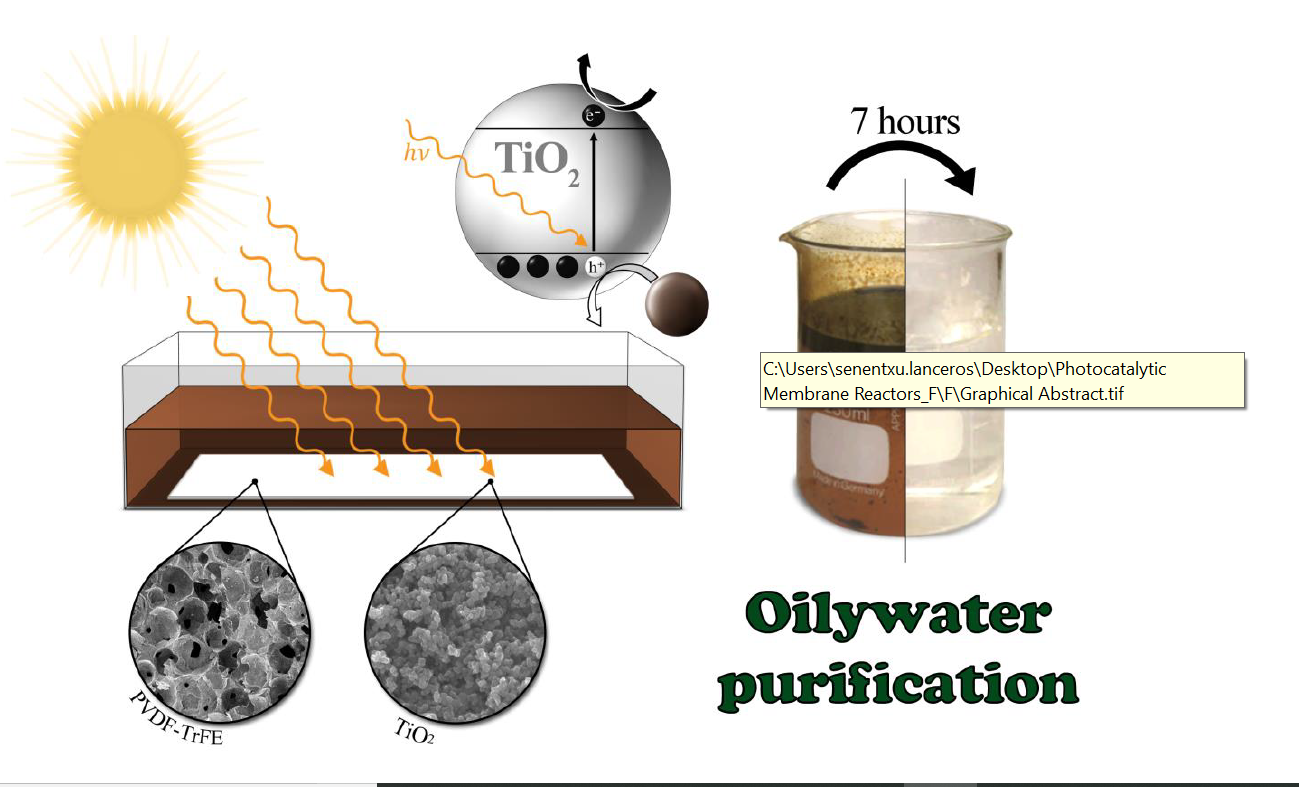Production of wastewater related to the oil and gas industries is increasing over the years. The compounds found in industrial wastewater typically show high toxicity, and in this way, they have become a primary environmental concern. Several techniques have been applied in industrial effluents remediation. In spite of the efforts, these techniques are yet ineffective to treat oily wastewater before it can be discharged safely to the environment. Membrane technology is an attractive approach to treat oily wastewater. This is dedicated to the immobilisation of TiO2 nanoparticles on poly (vinylidene fluoride–trifluoro ethylene) (PVDF-TrFE) porous matrix by solvent casting. Membranes with interconnected pores with an average diameter of 60 micrometres and the contact angle of 97°, decorated with TiO2 nanoparticles, are obtained. The degradation of oily wastewater demonstrated the remarkable photocatalytic efficiency of the nanocomposite membranes: under sunlight irradiation for 7 hours, colourless water was obtained. These results show the suitability of TiO2/P(VDF–TrFE) nanocomposite for photocatalytic applications for oily wastewater remediation.

